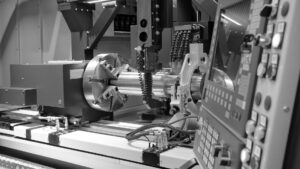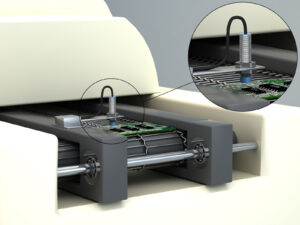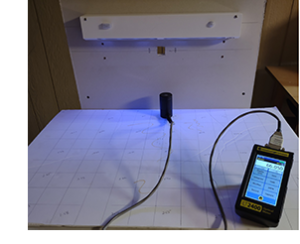The University of Huddersfield’s Centre for Precision Technologies will be receiving £3 million of funding over the next five years to lead major research programmes designed to drive significant advancements in machinery design and performance.
The news follows the Government’s recent announcement that over £100 million of new investment through its Strength in Places Fund will support five new landmark regional programmes. One of these is the West Yorkshire and Greater Manchester based Advanced Machinery and Productivity Initiative, known as AMPI, which consists of 10 partners, including the Centre for Precision Technologies.
This investment is expected to grow the UK’s advanced machinery capability to a £2 billion export capacity within ten years establishing over 30,000 high value manufacturing sector jobs.
Collaboration between academia and industry
Leading the project is Professor of Machine Tool Metrology and Research Director for CPT, Andrew Longstaff, who explains:
“West Yorkshire and Manchester have been at the heart of innovation in the design and manufacturing of machinery since the first industrial revolution. The future of manufacturing will need a step-change in the machines available to create the advanced products made from new materials, with new functionality, and greater reliability. The process of designing, building and reconfiguring machinery will need to be more efficient, more flexible, and more user-friendly for a changing workforce. The machines also need to be more resource-efficient throughout their working life, in the drive towards the Net Zero target for greenhouse gas emissions.
“AMPI is a large-scale response to these challenges and will be a critical element of our future research programmes, taking advantage of our existing strengths in machine design, modelling, simulation, metrology and control systems. But AMPI is much more than just a research project. The programme has been defined in close consultation with our industry partners and includes multiple mechanisms to learn from each other and to accelerate the progression of research outcomes into commercial exploitation. This focus on active collaboration between academia and the private sector is central to AMPI’s ethos and its core goal of a resurgent and world-class advanced machinery sector in Northern England.”
The Centre for Precision Technologies
The Centre for Precision Technologies (CPT) is widely recognised as both a UK and world-leading centre for advanced manufacturing metrology. Over more than two decades it has delivered large-scale research programmes with a national and global impact. By bringing together academic and industrial experts the team provides modern, cutting-edge measurement theory and technologies for dimensional and surface texture, machine performance and mathematics for measurement. Indeed with over 150 different industry partners across a broad range of industrial sectors, CPT has been able to tackle problems faced by industry in the modern transition of manufacturing.
CPT has provided industry with many original, creative and innovative technology solutions (hardware and software), provided training and measurement services and, most recently, created a spin-out company to further commercialise emerging technologies.
The overall programme is being led by the National Physical Laboratory (NPL) from their North of England site, which is based at the University’s 3M Buckley Innovation Centre. The AMPI consortium also includes several local and regional industrial partners who have been collaborating with the research team over a number of years, plus academic teams from Leeds, Manchester and Salford.
 Instrumentation Monthly Test | Measurement | Control
Instrumentation Monthly Test | Measurement | Control










